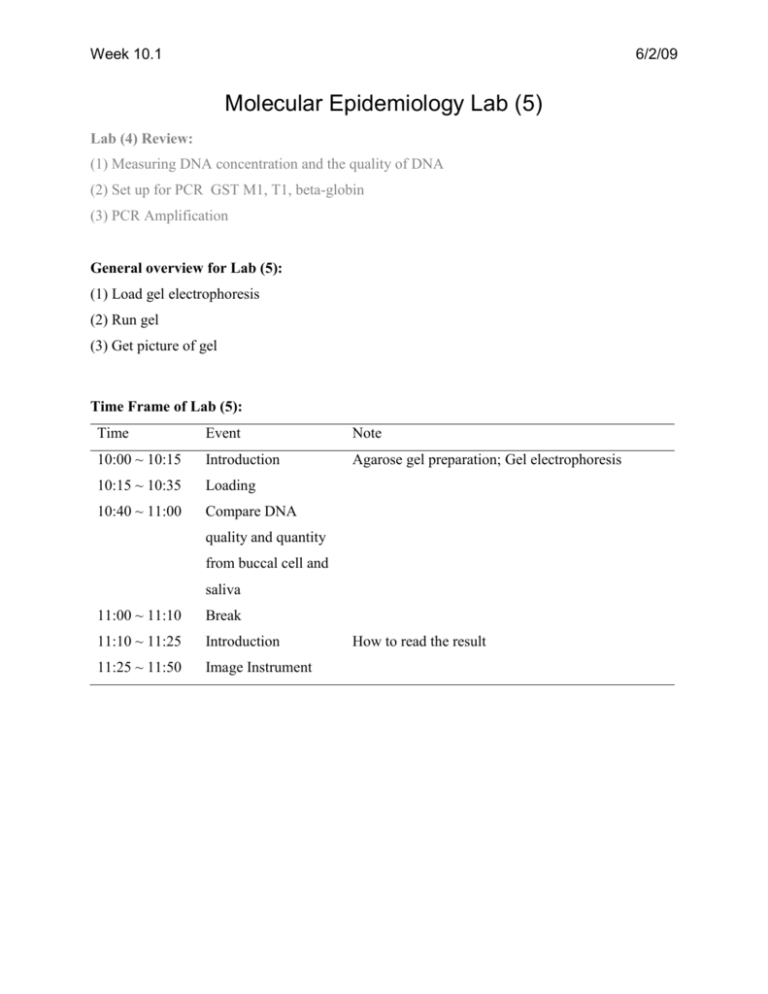protocol
advertisement

Week 10.1 6/2/09 Molecular Epidemiology Lab (5) Lab (4) Review: (1) Measuring DNA concentration and the quality of DNA (2) Set up for PCR GST M1, T1, beta-globin (3) PCR Amplification General overview for Lab (5): (1) Load gel electrophoresis (2) Run gel (3) Get picture of gel Time Frame of Lab (5): Time Event Note 10:00 ~ 10:15 Introduction Agarose gel preparation; Gel electrophoresis 10:15 ~ 10:35 Loading 10:40 ~ 11:00 Compare DNA quality and quantity from buccal cell and saliva 11:00 ~ 11:10 Break 11:10 ~ 11:25 Introduction 11:25 ~ 11:50 Image Instrument How to read the result Week 10.1 6/2/09 Instruction of gel electrophoresis 1. Gel electrophoresis is used to separate PCR products 2. The largest, slowest-moving DNA molecules will stay near the top of the gel. Smaller, faster-moving DNA molecules will be toward the end of the gel. 3. For DNA molecules, the process is simpler than for proteins which requires the addition of negatively charged detergent SDS. Each nucleotide in a nucleic acid molecule already carries a single negative charge. 4. DNA bands on the agarose or polyacrylamide gels are invisible unless the DNA is labeled or stained in some way. One sensitive method of staining DNA is to expose it to the ethidium bromide, which fluoresces under ultraviolet light when it is bound to DNA. 5. The purpose of the loading buffer is to keep the DNA at the bottom of the well and also so that we know where the DNA is going wells T o p O f G e l Week 10.1 6/2/09 Tips on loading the mixture into the wells 1) For GSTM1, GSTT1 PCR products, mix 5 μl of gel-loading buffer into the sample. 2) Load 10 μl of this mixture into the wells. (Note, you will have about 15 μl of mixture left in case something goes wrong with your gel.) 3) Place elbow on surface for steadiness. 4) Place the pipet tip OVER the well, as shown in figure 1. Don’t place pipet tip into the well. Figure 1. Figure 2







![Student Objectives [PA Standards]](http://s3.studylib.net/store/data/006630549_1-750e3ff6182968404793bd7a6bb8de86-300x300.png)